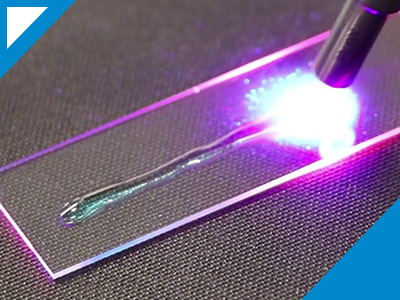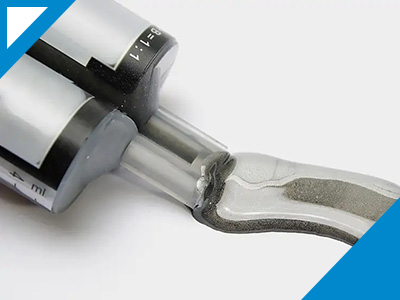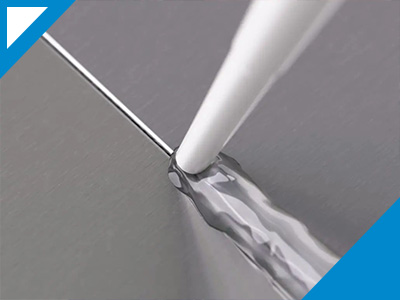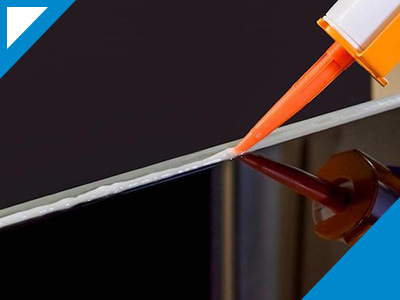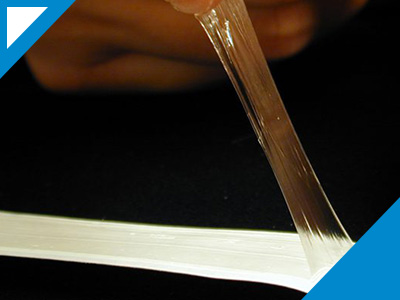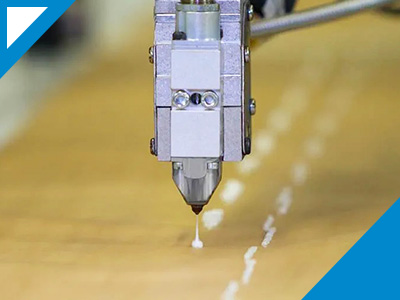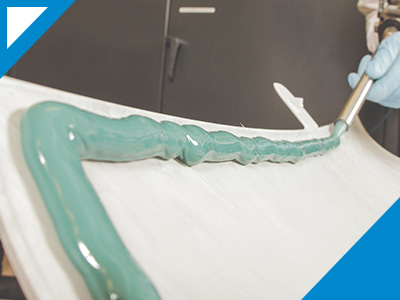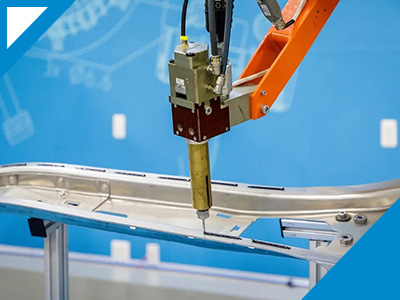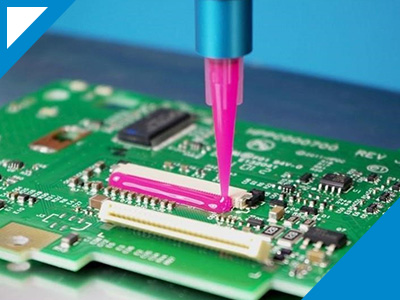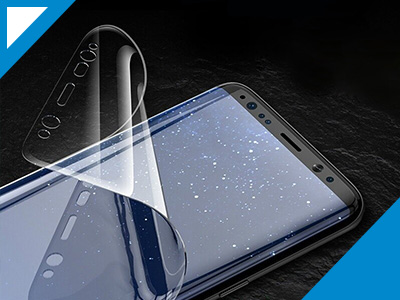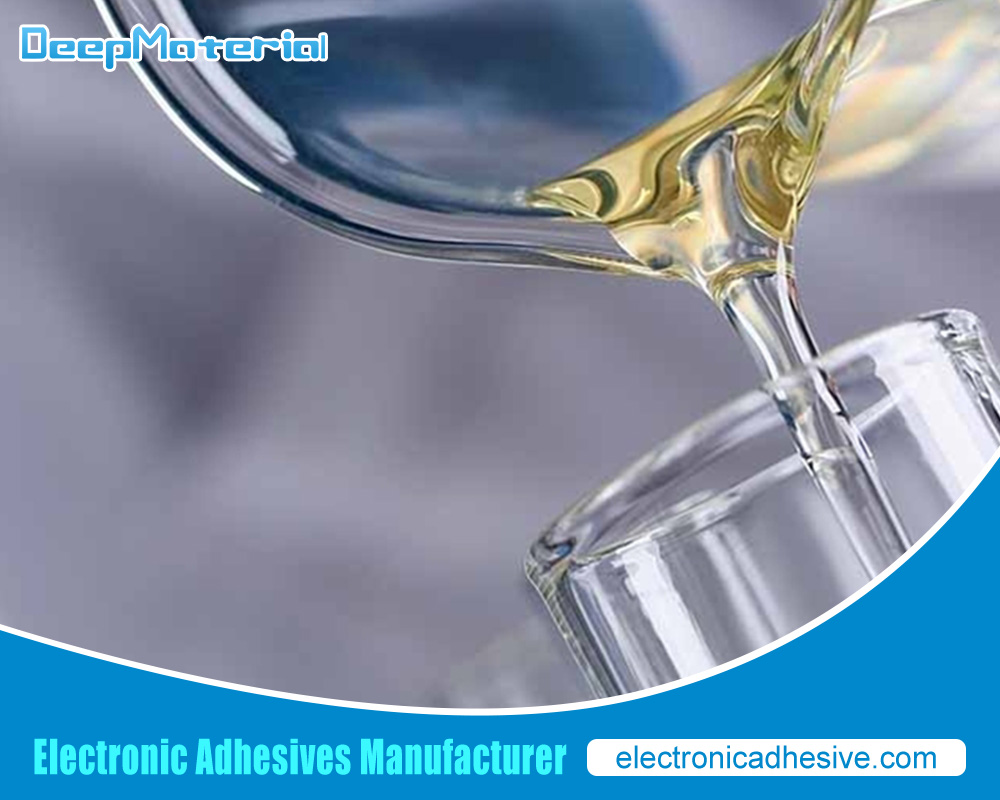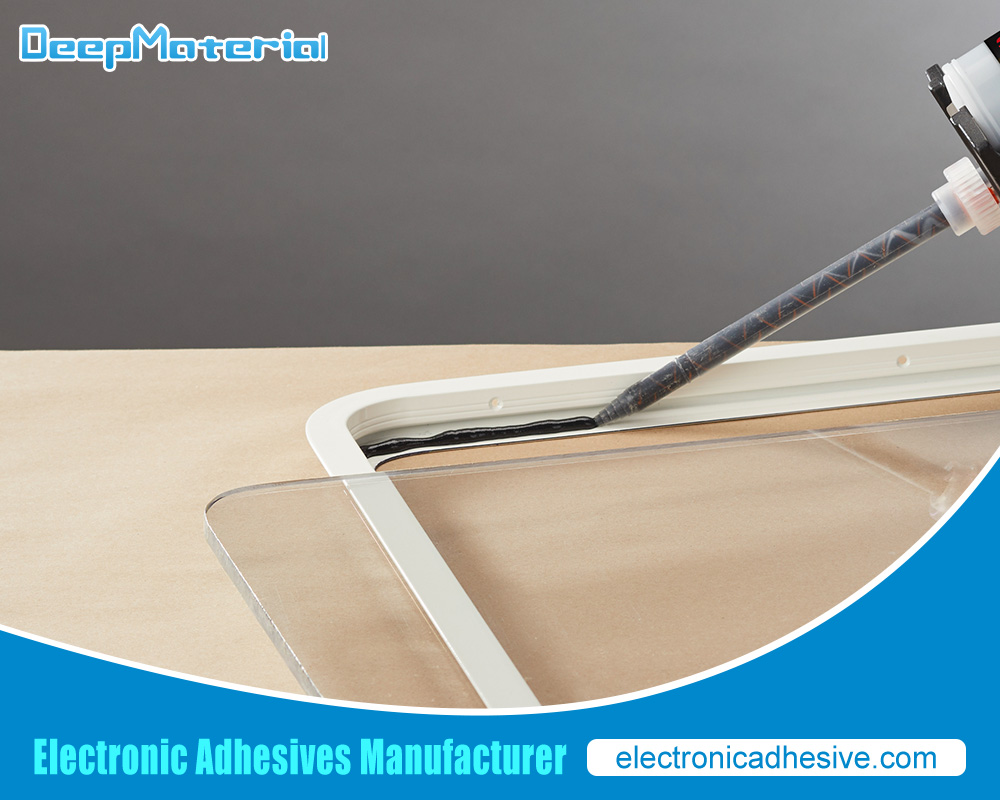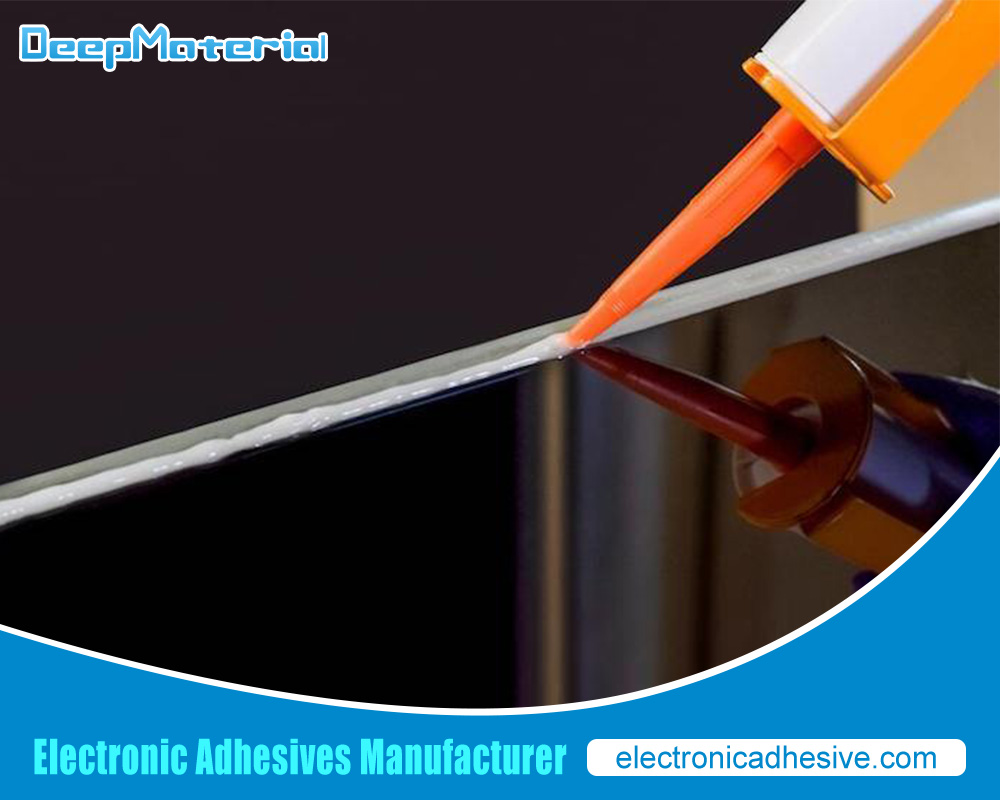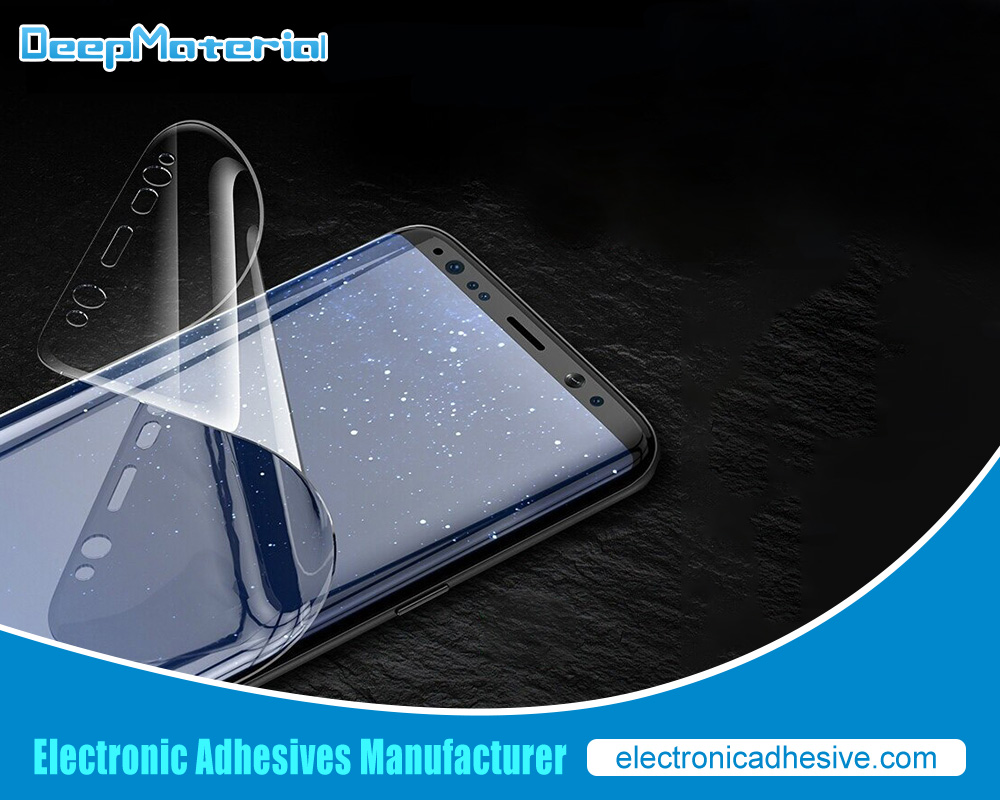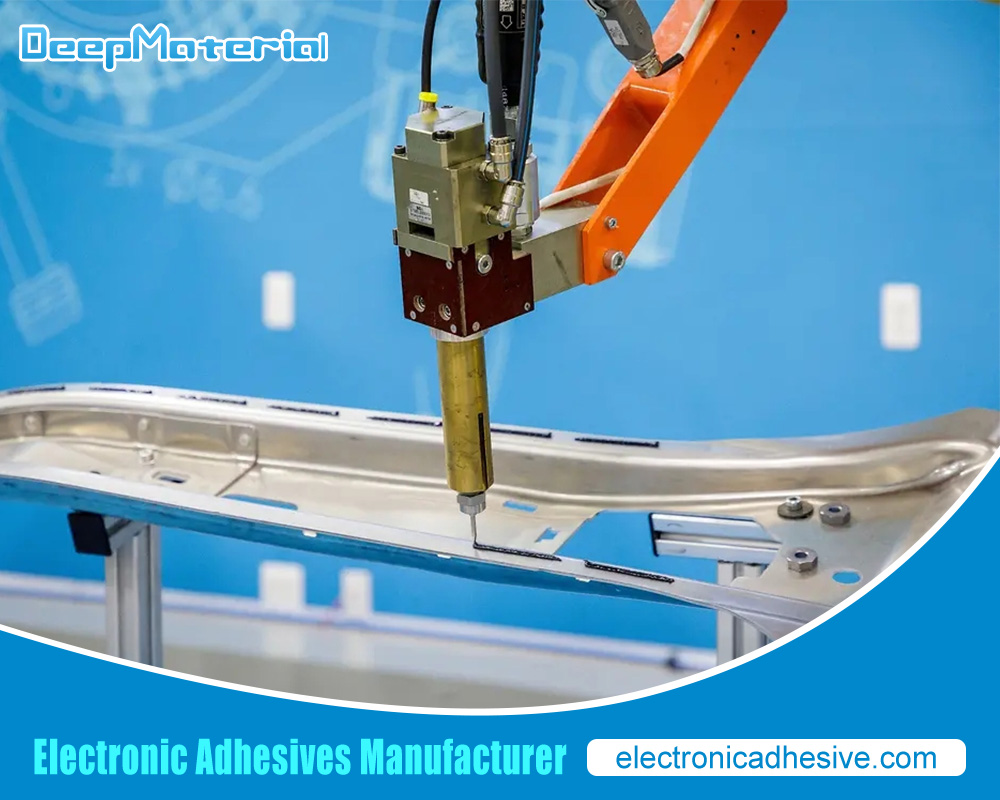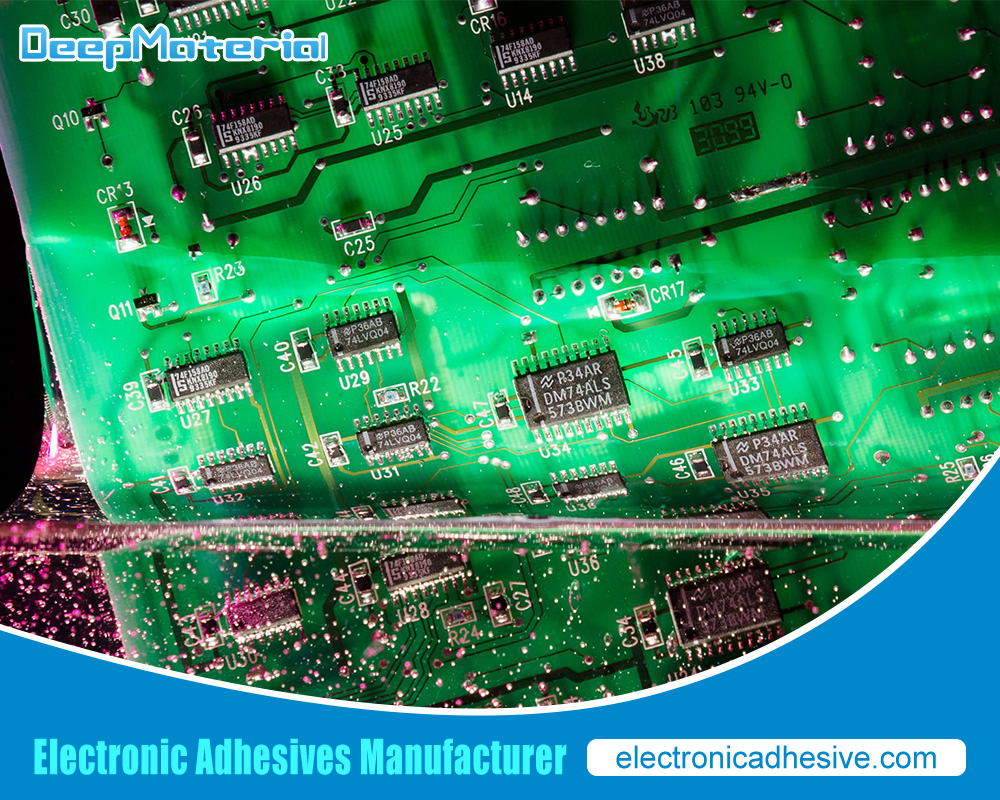LCD Screen Adhesive

LCD screen adhesive is vital in electronic devices that require a display screen, such as smartphones, tablets, and laptops. This adhesive ensures the stability and durability of the display screen, keeping it attached to the device’s frame. The screen could become loose without proper adhesion, malfunctioning the machine. This article explores the essential aspects of LCD screen adhesive and its applications in modern electronic devices.
What is LCD screen adhesive?
In today’s digital age, LCD screens have become ubiquitous in smartphones, tablets, laptops, and televisions. These sleek and vibrant displays offer stunning visuals, but have you ever wondered how they are assembled and kept securely in place? The answer lies in a crucial component called LCD screen adhesive. LCD screen adhesive is a specialized glue or adhesive used to bond the various layers of an LCD screen together, ensuring structural integrity and optimal performance.
LCD screens have multiple layers, including the liquid crystal layer, backlight layer, color filters, and protective glass or plastic panel. It is essential to securely hold these layers together to prevent separation, air gaps, or any distortion in the display. LCD screen adhesive is vital in this process, providing a robust and reliable bond between the layers.
One of the most commonly used types of adhesive in LCD screen assembly is optically clear adhesive (OCA). OCA is a transparent adhesive that offers excellent light transmission properties, allowing the display to maintain clarity and brightness. Its specific design aims to minimize the formation of air bubbles and dust particles between the layers, ensuring a seamless viewing experience.
Another type of adhesive used in LCD screen assembly is double-sided adhesive tape. Users often utilize this tape to attach the LCD panel to the frame or housing of the device. It provides a secure bond while acting as a cushion to absorb shocks and vibrations, protecting the delicate LCD screen from potential damage.
The choice of LCD screen adhesive depends on various factors, including the specific requirements of the display, the size and thickness of the layers, and the device’s intended application. Manufacturers carefully select adhesives that offer excellent adhesion properties, temperature resistance, and long-term durability.
LCD screen adhesive not only ensures the structural integrity of the display but also plays a crucial role in enhancing the performance and functionality of the device. It helps to minimize reflections and glare, improving visibility and readability even under bright lighting conditions. Additionally, the adhesive protects the sensitive components of the LCD screen from moisture, dust, and other environmental factors, prolonging the device’s lifespan.
Types of LCD screen adhesives
When assembling LCD screens, choosing the suitable adhesive is crucial for optimal performance and longevity. Different LCD screen adhesives are available, each with unique properties and applications. Here we will explore some standard LCD screen adhesives, highlighting their characteristics and uses.
Optically Clear Adhesive (OCA)
- OCA is a transparent adhesive specifically designed for bonding the layers of an LCD screen.
- It offers excellent light transmission properties, ensuring minimal impact on display clarity and brightness.
- OCA helps to reduce the formation of air bubbles and dust particles, resulting in a seamless and visually appealing display.
- Manufacturers widely use this adhesive in smartphones, tablets, and other electronic devices with LCD screens.
Double-Sided Adhesive Tape
- Double-sided adhesive tape is often employed in LCD screen assembly to attach the LCD panel to the device’s frame or housing.
- It provides a secure bond and cushion to absorb shocks and vibrations, protecting the LCD screen from potential damage.
- This adhesive tape comes in various thicknesses and materials, allowing manufacturers to choose the most suitable option for their specific requirements.
- It finds common usage in larger LCDs, such as televisions and monitors.
Liquid Optically Clear Adhesive (LOCA)
- LOCA is a liquid adhesive applied as a thin layer between the LCD panel and the protective glass or plastic cover.
- The curing process involves using ultraviolet (UV) light to form a strong and optically clear bond.
- LOCA offers excellent optical properties, enhancing display clarity and visibility.
- Manufacturers commonly use it in touchscreen devices, such as smartphones and tablets, where precise touch sensitivity is crucial.
Thermally Conductive Adhesive
- Manufacturers design thermally conductive adhesive to provide adhesive bonding and efficient heat dissipation in LCD screens.
- It helps to transfer heat away from critical components, ensuring proper thermal management and preventing overheating issues.
- This type of adhesive is commonly used in LCD screens that require enhanced cooling capabilities, such as those in high-performance gaming laptops or industrial displays.
UV-Curable Adhesive
- The UV-curable adhesive is a type of adhesive that cures when exposed to UV light.
- It offers fast curing times, allowing for efficient production processes.
- UV-curable adhesive provides strong adhesion and durability, making it suitable for LCD screens that require high-strength bonding.
- In industrial applications where rapid assembly and reliable bonding are essential, it is common to use it.
How does LCD screen adhesive work?
LCD screens have become integral to our daily lives, from smartphones and tablets to TVs and monitors. To ensure optimal performance and durability, manufacturers need to bond multiple layers in these displays securely, and that’s where LCD screen adhesive comes into play. Here we will delve into how LCD screen adhesive works, shedding light on its fundamental mechanisms and benefits.
LCD screen adhesive creates a solid bond between the different layers of an LCD. Here’s a breakdown of how it functions:
Bonding the Layers
- LCD screens comprise various layers, including the liquid crystal layer, backlight layer, color filters, and protective glass or plastic panel.
- The adhesive between these layers creates a secure bond, ensuring they remain in place and function as a single unit.
- It fills gaps or irregularities between the layers, preventing air bubbles or dust particles from interfering with the display quality.
Optical Clarity
- LCD screen adhesive, especially optically clear adhesive (OCA), is designed to maintain the transparency and clarity of the display.
- It has excellent light transmission properties, allowing the LCD screen to deliver vibrant colors and sharp images without distortion.
- The adhesive ensures minimal diluted loss or diffraction, resulting in a high-quality visual experience for the user.
Flexibility and Durability
- Formulators design LCD screen adhesive to withstand the mechanical stresses that LCDs encounter daily.
- It has flexibility, allowing the display to handle bending or slight deformations without compromising the bond between the layers.
- The adhesive also provides durability, ensuring the layers remain securely bonded over time and resist separation or delamination.
Protection and Environmental Resistance
- LCD screen adhesive acts as a protective barrier, shielding the sensitive components of the display from environmental factors.
- It helps prevent moisture, dust, and other contaminants from reaching the LCD layers, extending the screen’s lifespan.
- Some adhesives also resist temperature variations, UV radiation, and chemicals, further enhancing the display’s resilience.
Adhesive Types and Application Methods
- Different LCD screen adhesives are available, including optically clear adhesive, liquid optically clear adhesive (LOCA), and UV-curable adhesive.
- Manufacturers can apply these adhesives as liquid or pre-cut tape, depending on the specific requirements of the LCD screen assembly process.
- For example, manufacturers typically use LOCA to spread evenly between the LCD panel and the protective cover. OCA can be in the form of a pre-cut adhesive sheet.
Factors affecting LCD screen adhesive performance
The adhesive used to bond the layers plays a critical role in ensuring LCD screens’ optimal performance and longevity. However, various factors can influence the effectiveness of LCD screen adhesive. Here we will explore key factors affecting LCD screen adhesive performance, highlighting their significance and impact.
Surface Preparation
- Properly preparing the surfaces to be bonded is crucial for adhesive performance.
- Proper cleaning and removal of contaminants, such as dust, oils, and residues, ensure optimal adhesion.
- Inadequate surface preparation can lead to poor bonding, reduced adhesion strength, and potential delamination issues.
Adhesive Compatibility
Taking necessary measures is essential to ensure compatibility between the adhesive and the bonded materials.
- Different adhesives have varying chemical compositions and may not bond effectively with certain materials.
- Adhesive manufacturers provide guidelines and compatibility charts to help select the appropriate adhesive for specific substrates.
Temperature and Humidity
- Both temperature and humidity can significantly impact adhesive performance.
- Extreme temperatures can cause adhesives to lose their bonding strength or become brittle.
- High humidity can affect the curing process of certain bonds and compromise their integrity.
Curing Time and Conditions
- Adhesive curing refers to the process of achieving optimal strength and bonding properties.
- Each adhesive has a recommended curing time and conditions, including temperature and humidity.
- Adherence to the proper curing requirements may result in adequate bonding strength and reduced performance.
Mechanical Stress and Vibrations
- Regular operation subjects LCD screens to various mechanical stresses and vibrations.
- Excessive pressure or palpitations can compromise the integrity of the adhesive bond, leading to delamination or separation.
- One should consider device handling, transportation, and operational conditions to ensure adhesive durability.
Environmental Factors
- Environmental factors, such as UV radiation or chemical exposure, can impact adhesive performance.
- Formulators design some UV- or chemically-resistant adhesives, protecting specific ecological conditions.
- One must select adhesives based on the intended application environment to ensure long-term performance.
Aging and Degradation
- Over time, adhesives can undergo aging and degradation processes.
- Factors like temperature, humidity, and exposure to light can accelerate these processes.
- As bonds degrade, their bonding strength and performance may diminish, potentially leading to delamination or reduced display quality.

Advantages of using LCD screen adhesive
LCD screen adhesive plays a crucial role in the assembly and performance of LCD screens, and it offers numerous advantages that contribute to these displays’ overall quality, durability, and functionality. Here we will explore some of the key benefits of LCD screen adhesive, highlighting their significance in the manufacturing and user experience.
Structural Integrity
- LCD screen adhesive ensures the structural integrity of the display by securely bonding the different layers together.
- It helps prevent separation or delamination of the layers, maintaining the show’s integrity even under various mechanical stresses.
Enhanced Optical Clarity
- LCD screen adhesive, particularly optically clear adhesive (OCA), offers excellent light transmission properties.
- It minimizes diluted loss, diffraction, and reflections, enhancing optical clarity and vibrant visuals.
- The glue lets users experience sharp images, vivid colors, and improved readability on LCD screens.
Improved Display Performance
- LCD screen adhesive contributes to the overall performance of the display by reducing or eliminating air gaps between layers.
- The bond ensures a seamless and visually appealing presentation by minimizing the presence of air bubbles or dust particles.
- It helps prevent distortions or artifacts affecting image quality and user experience.
Durability and Longevity
- The use of LCD screen adhesive enhances the durability and longevity of LCDs.
- It provides a reliable bond that can withstand mechanical stresses, vibrations, and environmental factors.
- The glue helps protect the LCD screen’s sensitive components, extending the device’s lifespan.
Design Flexibility
- LCD screen adhesive offers design flexibility, allowing for the creation of various form factors and screen sizes.
- It enables the assembly of thin, lightweight, and compact displays without compromising structural integrity.
- Manufacturers can achieve sleek and modern designs while maintaining the performance and reliability of LCD screens.
Environmental Protection
- LCD screen adhesive acts as a protective barrier, shielding the display from moisture, dust, and other environmental contaminants.
- It helps maintain the LCD screen’s performance and functionality, even in challenging or harsh environments.
- The adhesive can resist temperature variations, UV radiation, and chemicals, ensuring reliable operation.
Manufacturing Efficiency
- The use of LCD screen adhesive contributes to efficient manufacturing processes.
- Adhesive application methods, such as liquid dispensing or pre-cut tape, enable precise and controlled bonding.
- Bonds with fast curing times can accelerate production and reduce assembly time, increasing manufacturing efficiency.
Disadvantages of using LCD screen adhesive
While LCD screen adhesive offers numerous advantages regarding structural integrity, performance, and durability, disadvantages exist. These drawbacks can affect manufacturing processes, display quality, and repairability. Here we will explore some of the key weaknesses of using LCD screen adhesive, shedding light on their significance and impact.
Repair Difficulty
- Repairing LCD screens bonded together with adhesive can pose challenges.
- Disassembling the layers without causing damage or introducing contaminants can be complex and time-consuming.
- Improving specific components or addressing issues within the display may require specialized tools and expertise.
Limited Reusability
- Once manufacturers use adhesive to assemble LCD screens, separating them without causing damage becomes difficult.
- This limited reusability can pose challenges when recycling or reworking LCDs.
- The adhesive bond makes it challenging to salvage individual components or separate layers for reuse or recycling.
Uniformity Issues
- Achieving uniform adhesive application across the entire display can be challenging.
- Variations in adhesive thickness or distribution can result in uneven bonding, leading to potential display inconsistencies.
- Non-uniform adhesive application may cause visual artifacts, such as uneven backlighting or color distribution.
Difficulty in Display Upgrades or Modifications
- The use of adhesive can complicate display upgrades or modifications.
- Swapping out components or upgrading specific layers, such as the backlight or color filters, becomes more challenging due to the adhesive bond.
- Altering or replacing individual layers may require specialized equipment and techniques, limiting the flexibility for customization.
Limited Thermal Conductivity
- Some LCD screen adhesives may have limited thermal conductivity properties.
- The way this may impact the screen handles and release heat.
- Displays that generate significant heat or require efficient cooling may need alternative bonding methods or additional thermal management solutions.
Potential Yellowing or Degradation
- Over time, certain LCD screen adhesives may exhibit yellowing or degradation.
- Factors such as exposure to UV radiation or temperature variations can accelerate this process.
- Yellowing or degradation of the bond can lead to visual distortions, reduced clarity, or display discoloration.
Sensitivity to Environmental Factors
- LCD screen adhesives can be sensitive to certain environmental factors.
- Extreme temperatures or high humidity may affect the adhesive’s performance and bonding strength.
- Adhesive properties can also be influenced by exposure to chemicals or other substances, leading to potential degradation or failure.
Applications of LCD screen adhesive
LCD screen adhesive is a versatile material that finds applications across various industries, and its unique properties and bonding capabilities make it essential for assembling LCD screens. Here we will explore some of the key applications of LCD screen adhesive, highlighting their significance in various industries and electronic devices.
Consumer Electronics
- Manufacturers extensively use LCD screen adhesive in consumer electronics, such as smartphones, tablets, laptops, and televisions.
- It securely bonds the different layers of the LCD screen, ensuring structural integrity and display performance.
- The adhesive’s optical clarity properties enable vibrant visuals and sharp image quality.
Automotive Displays
- LCD screens, including infotainment systems, instrument clusters, and heads-up displays, are integral to modern automotive shows.
- LCD screen adhesive helps to assemble and bond the layers in automotive displays, ensuring durability and functionality.
- It withstands the demanding operating conditions of the automotive environment, including temperature variations and vibrations.
Medical Devices
- Various medical devices with LCDs, such as patient monitors and diagnostic equipment, employ LCD screen adhesive.
- It helps to create a secure bond between the display layers, ensuring reliable performance in medical settings.
- The adhesive’s resistance to moisture and environmental factors makes it suitable for healthcare applications.
Industrial Equipment
- Industrial equipment and machinery often incorporate LCD screens for monitoring and control purposes.
- LCD screen adhesive provides the necessary bonding strength to withstand rugged industrial environments.
- It enables reliable performance in conditions involving dust exposure, humidity, and temperature fluctuations.
Gaming Devices
- LCD screens, including handheld consoles and gaming monitors, are integral to gaming devices.
- LCD screen adhesive ensures gaming displays’ structural integrity and longevity, even during intense gaming sessions.
- It contributes to vibrant visuals, enhancing the gaming experience for users.
Aviation and Aerospace
- LCD screens, such as cockpit displays and in-flight entertainment systems, are used extensively in aviation and aerospace applications.
- LCD screen adhesive ensures reliable performance and durability in challenging aviation environments.
- It withstands high-altitude conditions, temperature variations, and mechanical stresses.
Retail and Point-of-Sale (POS) Systems
- Retail and POS systems commonly employ LCD screens for product displays, transaction processing, and customer interaction.
- LCD screen adhesive provides a secure bond, enabling robust and long-lasting displays in commercial settings.
- It enhances the visual appeal of retail displays and ensures smooth touch interactions in POS systems.
Digital Signage
- Digital signage applications utilize LCD screen adhesive for advertising, information display, and wayfinding.
- It enables the assembly of large-sized displays with excellent visual clarity and structural integrity.
- The adhesive’s durability ensures reliable performance even in high-traffic public spaces.

Choosing the correct LCD screen adhesive for your device
LCD screen adhesive is a critical component in ensuring LCD screens’ performance, durability, and longevity. Selecting the suitable adhesive for your device is crucial to achieve optimal bonding strength and display quality. With various adhesive options available, it’s essential to consider certain factors to make an informed decision. Here we will explore key considerations for choosing the suitable LCD screen adhesive for your device, helping you navigate the selection process.
Substrate Compatibility
- Ensure the adhesive is compatible with bonded materials like glass, plastic, or metal.
- Different glues have varying chemical compositions and may not connect effectively with specific substrates.
- Consult adhesive manufacturers for compatibility guidelines or perform compatibility tests if needed.
Bonding Strength and Performance
- Evaluate the required bonding strength based on your device’s intended use and environmental conditions.
- Consider the mechanical stresses, temperature variations, and vibrations the adhesive must withstand.
- Adhesive data sheets provide information on bonding strength, shear strength, and performance under different conditions.
Optical Clarity and Visual Quality
- If optical clarity is crucial for your device, consider optically clear adhesive (OCA) options.
- OCAs minimize light loss, reflections, and distortions, ensuring excellent visual quality and vibrant colors.
- Based on your specific application requirements, balancing optical clarity and bonding strength is essential.
Environmental Resistance
- Evaluate the environmental conditions that your device may encounter, such as moisture, temperature, UV radiation, or chemicals.
- Choose an adhesive that offers suitable resistance to these environmental factors to ensure long-term performance.
- Formulators design some adhesives to be UV-resistant or chemically resistant, providing enhanced protection.
Manufacturing Process
- Consider the manufacturing process and assembly requirements of your device.
- Evaluate the adhesive application method, such as liquid dispensing, pre-cut tape, or film lamination.
- Adhesives with fast curing times can accelerate production, reducing assembly time and improving manufacturing efficiency.
Repair and Rework Considerations
- If repairability or rework ability is essential, consider adhesives allowing easier disassembly or separation.
- Some adhesives offer low peel strength or removable properties, enabling component replacement or repair.
- Keep in mind that adhesive removal may require specialized tools or processes.
Compliance and Regulations
- Ensure that the selected adhesive complies with relevant regulations, such as RoHS (Restriction of Hazardous Substances) or REACH (Registration, Evaluation, Authorization, and Restriction of Chemicals).
- Adhesive manufacturers should provide information on compliance with industry standards and regulations.
Supplier Support and Expertise
- Choose an adhesive supplier with a reliable track record and good customer support.
- Suppliers with technical expertise can guide adhesive selection and assist throughout the process.
LCD screen adhesive vs. other adhesives
The choice of adhesive is crucial for bonding LCD screens and other electronic displays. LCD screen adhesive offers specific properties and advantages, making it an ideal choice. However, it’s essential to understand how it compares to other types of bonds to make an informed decision. Here we will explore the differences between LCD screen adhesive and other adhesives commonly used in electronics, highlighting their strengths and limitations.
LCD Screen Adhesive
- LCD screen adhesive, including optically clear adhesive (OCA), is specifically designed for bonding the layers of LCD screens.
- It offers excellent optical clarity, minimizing light loss and reflections and ensuring vibrant visuals.
- LCD screen adhesive provides a reliable and durable bond that can withstand mechanical stresses and environmental factors.
- Formulators design to be compatible with the materials typically used in LCD screens, such as glass, plastic, and metal substrates.
- LCD screen adhesive is available in various forms, including liquid dispensing, pre-cut tape, and film lamination, offering flexibility in the assembly process.
Other Types of Adhesives
- Epoxy Adhesive: Epoxy adhesives are known for their high bonding strength and durability. Manufacturers commonly use them in electronic applications that require strong adhesion. However, epoxy adhesives may not offer the same optical clarity as LCD screen adhesives, potentially impacting the display’s visual quality.
- Silicone Adhesive: Silicone adhesives are known for their flexibility, high-temperature resistance, and moisture resistance. They find common usage in applications where environmental protection is crucial. However, silicone adhesives may not provide the same level of optical clarity as LCD screen adhesive, affecting the display’s visual quality.
- Pressure-Sensitive Adhesive (PSA): PSA, commonly found in tapes and films, offers easy application and repositioning. They are suitable for temporary bonding and mounting applications. However, PSAs may not provide the same bonding strength or long-term durability as LCD screen adhesive, potentially compromising the display’s performance and reliability.
Key Differences
- Optical Clarity: LCD screen adhesive, especially OCA, provides excellent optical clarity, minimizing light loss and reflections. Other glues offer different levels of visual clarity, potentially impacting display quality.
- Compatibility:LCD screen adhesive is specifically formulated for bonding LCD screen components, ensuring compatibility with display materials. Other glues may offer different levels of compatibility, affecting bond strength and reliability.
- Performance: Manufacturers design LCD screen adhesive to withstand mechanical stresses, temperature variations, and environmental factors specific to LCD screen applications. Other glues may provide a different level of performance or durability in this context.
- Application Method: LCD screen adhesive is available in various forms, providing flexibility in the assembly process. Regarding application methods and ease of use, other glues may have limitations.
Common problems associated with LCD screen adhesive
LCD screen adhesive plays a critical role in bonding the layers of LCD screens, ensuring structural integrity and performance. However, like any other component, LCD screen adhesive can encounter specific problems that may impact the display’s quality and longevity. Awareness of these common problems can help manufacturers and users address them effectively. Here we will explore some of the most common problems associated with LCD screen adhesive and discuss potential solutions.
Bubbling or Trapped Air
- Bubbling or trapped air between the adhesive and the display layers can lead to visual defects and compromised bonding.
- Bubbles can create uneven backlighting, distortions, or a hazy appearance.
- Bubbling can occur due to improper application techniques, inadequate pressure during bonding, or contamination.
Solution
- Ensure proper surface preparation before applying the adhesive.
- Use appropriate adhesive application techniques to minimize air entrapment.
- Apply even pressure during bonding to eliminate trapped air.
- Employ vacuum or pressure-assisted lamination techniques to reduce the risk of bubbling.
Delamination
- Delamination refers to the separation of the adhesive bond between the display layers.
- Delamination can result from insufficient bonding strength, poor adhesive-substrate compatibility, or exposure to harsh environmental conditions.
Solution
- Select an adhesive with suitable bonding strength for the specific application and environmental conditions.
- Ensure proper substrate preparation to promote strong adhesion.
- Consider using primers or surface treatments to enhance adhesive-substrate compatibility.
- For displays exposed to elevated temperatures, opt for adhesives with high-temperature resistance.
Yellowing or Discoloration
- Over time, some LCD screen adhesives may exhibit yellowing or discoloration, impacting the display’s visual quality.
- Yellowing can occur due to exposure to UV radiation, temperature variations, or chemical interactions.
Solution
- Choose adhesives with good UV stability and resistance to yellowing.
- Store and handle displays in controlled environments to minimize exposure to UV radiation and extreme temperatures.
- Avoid contact with chemicals or substances that can cause discoloration.
- Regularly inspect and replace adhesives if signs of yellowing or discoloration occur.
Adhesive Residue
- After removing the LCD screen, adhesive residue may remain on the display or components, making it challenging to clean or reassemble.
- Adhesive residue can affect visual clarity, hinder rework or repair, and introduce contaminants.
Solution
- Use adhesive removers or cleaning agents formulated explicitly for LCD screen adhesives.
- Follow manufacturer guidelines for adhesive removal and cleaning.
- Gently scrape or wipe off the residue using non-abrasive tools and materials.
- Conduct thorough cleaning and inspection before reassembling the display.
Inconsistent Bonding
- Inconsistent bonding can lead to display inconsistencies, such as uneven backlighting, color variations, or visual artifacts.
- Irregular bonding may result from variations in adhesive thickness, distribution, or application techniques.
Solution
- Ensure consistent adhesive thickness and distribution during application.
- Employ automated dispensing or lamination processes for more precise and uniform bonding.
- Use proper curing techniques and equipment to achieve reliable and consistent adhesion.
- Conduct quality control checks to identify and address any inconsistencies in the bonding process.
Proper handling and storage of LCD screen adhesive
LCD screen adhesive is a critical component in the assembly of LCD screens, ensuring optimal bonding and display performance. Proper handling and storage are essential for maintaining the adhesive’s quality and effectiveness. Mishandling or improper storage can lead to adhesive degradation, reduced performance, and compromised display quality. Here we will explore the importance of properly handling and storing LCD screen adhesive, providing guidelines to ensure optimal adhesive performance.
Temperature and Humidity Control
- It is essential to store LCD screen adhesive in a controlled environment to prevent temperature and humidity fluctuations.
- Excessive heat or cold can degrade the adhesive’s properties, affecting its bonding strength and stability.
- High humidity levels can introduce moisture, which may impact adhesive performance and lead to delamination or bubbling.
Solution
- Store adhesive in a temperature-controlled environment within the recommended temperature range specified by the manufacturer.
- Keep the storage area dry and avoid exposure to excessive humidity.
- Use desiccant packs or humidity control devices to maintain appropriate moisture levels.
Light Exposure
- Prolonged exposure to UV light can degrade LCD screen adhesive, leading to discoloration or reduced bonding strength.
- UV radiation can also affect the optical clarity of bonds designed for transparent displays.
Solution
- Store adhesive in opaque containers or packaging to minimize exposure to UV light.
- Avoid storing glue near windows or areas with direct sunlight.
- Consider using UV-blocking containers or storage solutions for added protection.
Handling Precautions
- Proper handling techniques are crucial to prevent contamination and ensure the adhesive’s integrity.
- Contaminants like dust, oils, or debris can interfere with the adhesive’s bonding ability.
Solution
- Follow proper handling procedures, including wearing gloves and using clean tools to minimize contamination.
- Avoid touching the adhesive surfaces with bare hands to prevent the transfer of oils or dirt.
- Keep the sticky container closed when not in use to prevent contamination from airborne particles.
Shelf Life and Expiration Dates
- LCD screen adhesive has a limited shelf life, and its effectiveness can diminish.
- Adhesive manufacturers provide an expiration date or recommended shelf life for their products.
Solution
- Check the expiration date or shelf life specified by the manufacturer before using the adhesive.
- Ensure that older batches are used first by rotating the stock.
- Dispose of expired or deteriorated adhesive properly and avoid using it for critical applications.
Adhesive Handling Equipment
- Proper equipment and tools are essential for accurately dispensing, applying, and storing LCD screen adhesive.
Solution
- Use appropriate dispensing equipment, such as syringes or automated dispensers, to ensure accurate and consistent adhesive application.
- Clean dispensing equipment regularly to prevent contamination or clogging.
- Store adhesive containers clean and organized, keeping them away from potential sources of damage or spills.
LCD screen adhesive removal techniques
Whether repairing a cracked LCD screen or replacing a faulty component, one of the most challenging tasks is removing the adhesive that holds the screen in place. Improper adhesive removal techniques can damage the screen or other delicate components. This article will explore practical methods for safely removing LCD screen adhesive.
Methods for LCD Screen Adhesive Removal
Heat Gun or Hair Dryer Method
- Apply heat to the edges of the LCD screen using a heat gun or hair dryer set to a low temperature.
- Gradually heat the adhesive, softening it and making it easier to remove.
- Use a plastic spudger or a thin, non-metallic tool to pry the screen away from the adhesive gently. Be careful not to apply excessive force to avoid damaging the screen.
Isopropyl Alcohol Method
- Apply a small amount of isopropyl alcohol to a microfiber cloth or cotton swab.
- Gently rub the cloth or swab over the adhesive, allowing the alcohol to dissolve.
- Start from the edges and work toward the center, applying slight pressure as needed.
- Once the adhesive has softened, use a plastic spudger or a similar tool to lift the LCD screen carefully.
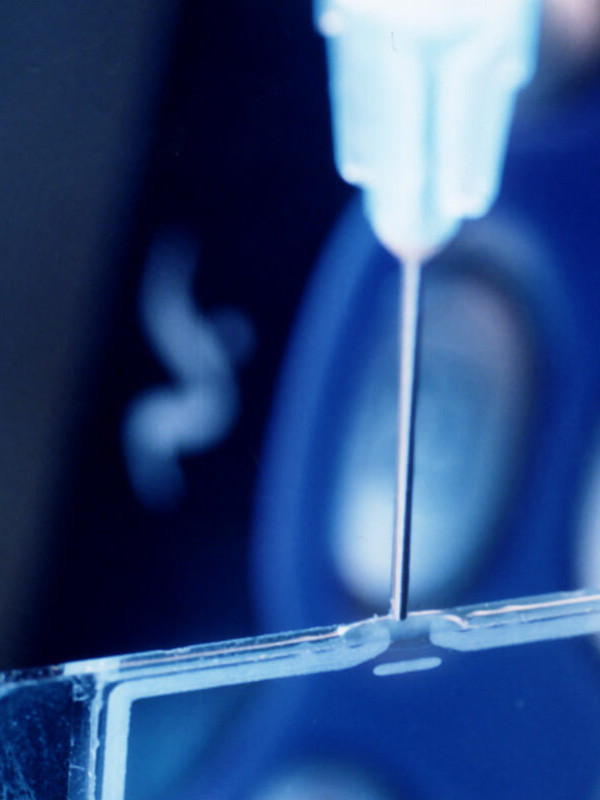
Adhesive Remover Solution
- Purchase a specialized adhesive remover solution designed for electronics.
- Follow the manufacturer’s instructions for applying the key to the adhesive.
- Allow the solution to penetrate and dissolve the adhesive for the recommended duration.
- Use a plastic spudger or a similar tool to gently lift the LCD screen, taking care not to damage the components.
Precautions to Consider
- Always disconnect the power source and remove the battery before attempting any repairs to minimize the risk of electric shock.
- Use plastic or non-metallic tools to avoid scratching or damaging the LCD screen or other components.
- Work in a well-lit area to clearly see the adhesive and any potential risks.
- Take your time and be patient during the adhesive removal process to avoid unnecessary damage.
Replacing LCD screen adhesive
When repairing or replacing an LCD screen, replacing the adhesive that holds the screen in place is often necessary. A proper adhesive ensures a secure and durable bond between the screen and the device. In this article, we will provide a step-by-step guide on effectively replacing LCD screen adhesive.
Steps to Replace LCD Screen Adhesive
Gather the necessary tools and materials
- If you need replacement adhesive strips or glue for LCD screens, we can help you find the solution.
- You can use isopropyl alcohol and a microfiber cloth for cleaning.
- You can use a plastic spudger or a non-metallic tool for prying.
Power off the device and remove the LCD screen
- Disconnect the power source and remove the battery, ensuring safety.
- Follow the manufacturer’s instructions to disassemble the device and detach the LCD screen if necessary.
Clean the LCD screen and frame
- Dampen a microfiber cloth with isopropyl alcohol and gently wipe the LCD screen and frame to remove debris, dust, or adhesive residue.
- Allow the screen and stand to dry completely before proceeding.
Apply the replacement adhesive
- If using adhesive strips, carefully peel off the backing from the strips.
- Align the adhesive strips or apply adhesive glue along the edges of the LCD screen or the frame, depending on the manufacturer’s recommendations.
- Ensure even and consistent application, ensuring not to overlap the adhesive or leave gaps.
Position and secure the LCD screen
- Carefully align the LCD screen with the frame and gently press it into place.
- Apply even pressure along the edges to ensure the adhesive makes proper contact.
- Use a plastic spudger or a similar tool to apply gentle pressure to the edges of the screen, providing a secure bond.
Allow the adhesive to set
- Follow the adhesive manufacturer’s instructions regarding the required curing or drying time.
- Avoid applying excessive pressure or using the device until the adhesive has fully set to prevent displacement or damage.
LCD screen adhesive repair services
LCD screens are delicate components that require careful handling and proper adhesive application for optimal functionality. If you’re facing issues with your LCD screen adhesive or need a repair, seeking professional LCD screen adhesive repair services can be wise. This article will explore the benefits and services offered by professionals in this field.
Benefits of LCD Screen Adhesive Repair Services
Expertise and Experience
- Professionals specializing in LCD screen adhesive repair have extensive knowledge and experience handling various devices and adhesive types.
- They are familiar with different screen models, adhesive techniques, and common issues related to adhesive failure.
- Their expertise ensures a high-quality repair that minimizes the risk of further damage to the screen or other components.
Proper Diagnosis
- Professional repair services can accurately diagnose the underlying cause of adhesive failure.
- They can identify issues such as improper adhesive application, degradation, or incompatible adhesive selection.
- A proper diagnosis helps address the root cause of the problem, ensuring a long-lasting repair.
Use of Quality Adhesive
- LCD screen adhesive repair services employ high-quality adhesive products specifically designed for electronics.
- These adhesives provide a robust and reliable bond, ensuring the screen remains securely in place.
- Using quality adhesive reduces the risk of future adhesive failure and enhances the overall durability of the repair.
Skillful Repair Techniques
- Professionals utilize advanced tools and techniques to remove the existing adhesive, clean the surface, and apply the new glue accurately.
- They follow industry best practices to ensure precise alignment, proper pressure distribution, and even adhesive application.
- Skillful repair techniques result in a secure bond and minimize the chances of screen misalignment or damage during the repair process.
Warranty and Customer Support
- Reputable LCD screen adhesive repair services often provide warranties on their quality and the adhesive used.
- This warranty gives you peace of mind and serves as an assurance of the quality of the repair.
- Additionally, professional repair services typically offer excellent customer support, addressing any concerns or issues arising after the repair.
DIY repair kits for LCD screen adhesive
LCD screens have become integral to our daily lives, from smartphones and tablets to laptops and TVs. However, these fragile displays are susceptible to damage, especially regarding the adhesive that holds them in place. Thankfully, DIY LCD screen adhesive repair kits offer a convenient solution to these issues without needing professional assistance or costly replacements. Here we’ll explore the benefits and advantages of using these repair kits, helping you regain the pristine display you once had.
Benefits of LCD Screen Adhesive Repair Kits
- Cost-effective: Repairing an LCD screen adhesive issue can be expensive, especially if you opt for professional repairs or a complete replacement. DIY repair kits are a budget-friendly alternative that allows you to fix the problem yourself at a fraction of the cost.
- Ease of use: These kits have a simple design, providing step-by-step instructions and all the necessary tools to complete the repair. You don’t need any technical expertise to use them, making them accessible for beginners and tech-savvy individuals alike.
- Time-saving: Traditional repair methods often involve shipping your device to a repair center or waiting for a technician to fix it. With a DIY repair kit, you can tackle the problem immediately, saving you valuable time and allowing you to return to using your device sooner.
- Versatility: LCD screen adhesive repair kits are compatible with various devices, including smartphones, tablets, laptops, and monitors. Whether you have an iPhone with a loose display or a computer with a lifting screen, these kits offer a versatile solution for various adhesive-related issues.
- Long-lasting results: These repair kits use high-quality adhesive materials to ensure a strong bond between the LCD screen and the device’s frame. You can be confident that the screen will remain attached and free from future issues.
Importance of using quality LCD screen adhesive
When it comes to repairing LCD screens, using high-quality adhesive is crucial. The glue plays a significant role in holding the light display in place and ensuring its longevity. Here we’ll highlight the importance of using quality LCD screen adhesive and how it can enhance the performance and durability of your devices.
Importance of Using Quality LCD Screen Adhesive
- Secure and Reliable Bond: High-quality adhesive creates a strong and fast bond between the LCD screen and the device’s frame. This bond prevents the display from shifting or becoming loose, ensuring optimal performance and minimizing the risk of further damage.
- Enhanced Durability: LCD screens are prone to vibrations, impacts, and temperature changes. Using inferior adhesive can lead to premature detachment of the display, compromising its durability. Designers create quality adhesive materials to withstand these challenges, offering long-lasting durability to your device.
- Optimal Display Performance: The adhesive used in LCD screen repairs can affect the display’s visual quality. An inferior bond may introduce air bubbles or interfere with the screen’s clarity, resulting in a compromised viewing experience. Using a quality adhesive, you can ensure a seamless and flawless display with vibrant colors and sharp details.
- Protection Against Moisture and Dust: LCD screens are susceptible to moisture and dust particles that can seep through gaps and damage delicate components. High-quality adhesive provides an effective barrier, sealing off the screen from external elements and preventing potential harm. This protection helps extend your device’s lifespan and maintain its optimal functionality.
- Compatibility with Different Devices: Manufacturers design quality LCD screen adhesive to be versatile and compatible with various devices such as smartphones, tablets, laptops, and monitors. Whether you are repairing a specific brand or model, using a reliable adhesive ensures a proper fit and compatibility, reducing the risk of complications or future issues.
Environmental impact of LCD screen adhesive
In the ever-evolving world of technology, LCD screens, from smartphones to televisions, have become ubiquitous. While these screens offer vibrant visuals and sharp displays, examining the environmental impact of their products and components is essential. This article will shed light on the ecological implications of LCD screen adhesives, a crucial element in their assembly.
The Role of LCD Screen Adhesive
LCD screens rely on adhesive materials to bond various layers, including the liquid crystal display, backlight, and protective glass. Adhesives ensure structural integrity, preventing delamination and enhancing screen durability. However, the production and disposal of these adhesives contribute to environmental challenges.
Environmental Impacts
Resource Extraction
- Adhesive production often involves extracting non-renewable resources such as petroleum or synthetic polymers, leading to increased carbon emissions and habitat destruction.
- The extraction process may result in soil and water pollution, impacting local ecosystems.
Energy Consumption
- Manufacturing LCD screen adhesives require substantial energy, contributing to carbon dioxide emissions and global warming.
- The energy-intensive production process further depletes fossil fuel reserves and exacerbates climate change.
Chemical Composition
- Many LCD screen adhesives contain volatile organic compounds (VOCs), which can contribute to indoor air pollution when released into the environment.
- Experts have linked VOCs to various health issues, including respiratory problems and allergies.
Disposal Challenges
- At the end of their lifecycle, LCD screens often end up in landfills, posing significant environmental threats due to the presence of adhesives.
- Improper disposal can lead to toxic chemicals leaching into the soil and groundwater, contaminating the surrounding environment.

Mitigation Strategies
Development of Environmentally Friendly Adhesives
- Researchers and manufacturers should prioritize the development of eco-friendly alternatives to traditional LCD screen adhesives.
- We should emphasize using renewable and biodegradable materials that reduce carbon emissions and minimize environmental harm.
Recycling and Responsible Disposal
- Encouraging consumers to recycle their LCD screens will help divert them from landfills and enable the extraction of valuable materials.
- Manufacturers should implement effective recycling programs to recover adhesives and other components, reducing environmental impact.
Regulatory Measures
- Governments and regulatory bodies should establish and enforce stricter guidelines regarding the production and disposal of LCD screen adhesives.
- These regulations should promote the use of non-toxic, low-VOC adhesives and encourage sustainable practices throughout the industry.
LCD screen adhesive regulations and standards
As the demand for LCD screens continues to rise, addressing the environmental impact associated with their production and disposal becomes imperative. One crucial aspect that requires attention is the regulations and standards surrounding LCD screen adhesives. In this article, we delve into the importance of these regulations and highlight their role in promoting sustainable practices and reducing the environmental footprint of LCD screens.
The Need for LCD Screen Adhesive Regulations
Environmental Protection
- LCD screen adhesive regulations aim to minimize the release of harmful substances into the environment during manufacturing and disposal.
- By implementing these regulations, governments and regulatory bodies strive to mitigate pollution, protect ecosystems, and reduce the carbon footprint.
Human Health and Safety
- Regulations regarding LCD screen adhesives also focus on safeguarding human health and safety.
- By limiting the use of toxic compounds and volatile organic compounds (VOCs), these regulations help protect workers in the manufacturing industry and consumers who interact with LCD screens.
Key LCD Screen Adhesive Regulations and Standards
Restriction of Hazardous Substances (RoHS)
- The RoHS directive restricts the use of hazardous substances, including lead, mercury, cadmium, and certain flame retardants, in electronic and electrical equipment.
- LCD screen adhesives must comply with RoHS standards to ensure they do not contain harmful substances that could harm human health and the environment.
Registration, Evaluation, Authorization, and Restriction of Chemicals (REACH)
- REACH is a regulation implemented in the European Union (EU) that aims to protect human health and the environment from chemical risks.
- LCD screen adhesives fall under the scope of REACH, requiring manufacturers to register and provide information about the chemicals they use.
Indoor Air Quality (IAQ) Standards
- IAQ standards focus on limiting the emission of VOCs from products, including LCD screens and their adhesives.
- Compliance with IAQ standards ensures that LCD screen adhesives meet specific emission requirements, promoting better indoor air quality and reducing health risks.
Extended Producer Responsibility (EPR)
- EPR regulations place manufacturers’ responsibility to manage their products’ entire lifecycle, including proper disposal and recycling.
- LCD screen adhesive regulations often incorporate EPR principles, encouraging manufacturers to establish effective recycling programs and adopt sustainable practices.
Benefits and Future Implications
Environmental Conservation
- LCD screen adhesive regulations help minimize pollution and preserve natural resources by limiting the use of hazardous materials.
- Adhering to these regulations reduces the environmental impact of LCD screen production and disposal, promoting sustainability.
Technological Innovation
- Stringent regulations encourage manufacturers to invest in research and development, creating safer and more sustainable LCD screen adhesives.
- Encouraging progress and creativity in the industry leads to the result of eco-friendly alternatives and technological advancements.
Future developments in LCD screen adhesive technology
The world of LCD screens continues to evolve rapidly, with technological advancements constantly reshaping our visual experiences. As we strive for thinner, lighter, and more flexible displays, LCD screen adhesive technology becomes increasingly critical. In this article, we will explore the exciting future developments in LCD screen adhesive technology and its potential to revolutionize the industry.
Enhancements on the Horizon
Thinner and Flexible Adhesives
- Researchers and manufacturers are working towards developing adhesive materials that are thinner and more flexible.
- These advancements will enable the production of ultra-thin and bendable displays, opening up new possibilities for innovative applications.
Improved Optical Performance
- Future LCD screen adhesives aim to enhance the optical performance of displays, including brightness, color accuracy, and contrast.
- These advancements will result in more vibrant and immersive visual experiences, meeting the increasing demands of consumers.
Enhanced Durability and Resistance
- Developing adhesive technology with enhanced durability and resistance is crucial for prolonging the lifespan of LCD screens.
- Advancements in this area will reduce the risk of delamination, cracking, and damage due to environmental factors, ensuring a longer-lasting display.
Eco-friendly Formulations
- Due to growing concerns about environmental sustainability, manufacturers expect future LCD screen adhesives to focus on eco-friendly formulations.
- Developing bonds using renewable materials, bio-based polymers, and low-toxicity compounds will reduce the industry’s carbon footprint.
Improved Manufacturing Processes
- Innovations in LCD screen adhesive technology also encompass improvements in manufacturing processes.
- These advancements aim to streamline production, reduce energy consumption, and minimize waste, making the manufacturing of LCD screens more efficient and sustainable.
Adhesives for Advanced Display Technologies
- As display technologies like OLED and MicroLED gain popularity, adhesive technology will adapt to meet their specific requirements.
- Future developments will cater to these advanced display technologies’ bonding and assembly needs, ensuring optimal performance and reliability.
Benefits and Implications
Enhanced User Experience
- Future developments in LCD screen adhesive technology will enhance the overall user experience by delivering superior visual quality and improved durability.
- Consumers can expect displays with sharper images, better color reproduction, and increased resilience to environmental factors.
Technological Advancements
- The evolution of LCD screen adhesive technology will facilitate the advancement of display technologies.
- Thin, flexible adhesives, for example, will enable the creation of innovative form factors and applications previously unachievable.
Environmental Sustainability
- The focus on eco-friendly formulations and manufacturing processes will contribute to reducing the environmental impact of LCD screen production and disposal.
- Adhesive technologies incorporating renewable materials and minimizing toxic compounds will promote a greener and more sustainable industry.
Final thoughts on LCD screen adhesive
As we conclude our exploration of LCD screen adhesive, it is essential to reflect on the significance of this component in the realm of display technology. LCD screens have become an integral part of our daily lives, and adhesive technology plays a crucial role in their assembly and performance. This final reflection summarizes the key takeaways and highlights the importance of balancing innovation and sustainability.
Key Takeaways
Crucial Component
- LCD screen adhesive is a vital component that ensures displays’ structural integrity and durability.
- Its role in bonding various layers, including the liquid crystal display, backlight, and protective glass, cannot be understated.
Environmental Impact
- The production and disposal of LCD screen adhesives contribute to environmental challenges, including resource extraction, energy consumption, chemical composition, and removal challenges.
- Addressing these impacts is crucial for a more sustainable future.
Regulations and Standards
- LCD screen adhesive regulations and standards play a significant role in promoting sustainability and reducing the environmental footprint.
- Restrictions on hazardous substances, indoor air quality standards, and extended producer responsibility are essential guidelines to ensure eco-friendly practices.
Future Developments
- The future of LCD screen adhesive technology holds promising advancements, such as thinner and more flexible adhesives, improved optical performance, enhanced durability, and eco-friendly formulations.
- These developments will enhance user experiences, contribute to technological advancements, and promote environmental sustainability.
Striking a Balance
Innovation and Technological Advancements
- The drive for innovation should continue to push the boundaries of LCD screen adhesive technology.
- Advancements in thinner, flexible adhesives and improved optical performance will result in more immersive and visually captivating displays.
Environmental Sustainability
- While we value innovation, it is crucial to accompany it with a commitment to environmental sustainability.
- Manufacturers should prioritize the development of eco-friendly adhesive formulations, sustainable manufacturing processes, and responsible disposal practices.
Collaboration and Responsibility
- Achieving a balance between innovation and sustainability requires collaboration between manufacturers, researchers, regulatory bodies, and consumers.
- Manufacturers must take responsibility for adopting and implementing sustainable practices, while consumers can support these efforts by making informed purchasing decisions and recycling their devices responsibly.
Conclusion
In conclusion, LCD screen adhesive is a crucial component of modern electronic devices that require a display screen. It is essential to use the correct type of adhesive and ensure proper handling and storage to maintain the device’s stability and durability. As technology continues to advance, so will the developments in LCD screen adhesive technology, paving the way for even more sophisticated and efficient adhesive solutions in the future.



